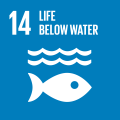Nature is critical to our survival: nature provides us with our oxygen, regulates our weather patterns, pollinates our crops, produces our food, feed and fibre. But it is under increasing stress. Human activity has altered almost 75 per cent of the earth’s surface, squeezing wildlife and nature into an ever-smaller corner of the planet.
Deforestation and desertification – caused by human activities and climate change – pose major challenges to sustainable development and have affected the lives and livelihoods of millions of people. Forests are vitally important for sustaining life on Earth, and play a major role in the fight against climate change. And investing in land restoration is critical for improving livelihoods, reducing vulnerabilities, and reducing risks for the economy.
The health of our planet also plays an important role in the emergence of zoonotic diseases, i.e. diseases that are transmissible between animals and humans. As we continue to encroach on fragile ecosystems, we bring humans into ever-greater contact with wildlife, enabling pathogens in wildlife to spill over to livestock and humans, increasing the risk of disease emergence and amplification.


































Facts & Figures
Human activity has altered almost 75 per cent of the earth’s surface, squeezing wildlife and nature into an ever-smaller corner of the planet and increasing risks of zoonotic diseases like COVID-19.
Around 1.6 billion people depend on forests for their livelihood, including 70 million indigenous people.
Forests are home to more than 80 per cent of all terrestrial species of animals, plants and insects.
Between 2010 and 2015, the world lost 3.3 million hectares of forest areas. Poor rural women depend on common pool resources and are especially affected by their depletion.
Currently, land degradation has reduced productivity in 23 per cent of the global terrestrial area, and between $235 billion and $577 billion in annual global crop output is at risk as a result of pollinator loss.
Arable land loss is estimated at 30 to 35 times the historical rate
Due to drought and desertification, 12 million hectares are lost each year (23 hectares per minute). Within one year, 20 million tons of grain could have been grown.
74 per cent of the poor are directly affected by land degradation globally.
Habitat loss and deterioration, largely caused by human actions, have reduced global terrestrial habitat integrity by 30 per cent relative to an unimpacted baseline.
Illicit poaching and trafficking of wildlife continues to thwart conservation efforts, with nearly 7,000 species of animals and plants reported in illegal trade involving 120 countries.
Of the 8,300 animal breeds known, 8 per cent are extinct and 22 per cent are at risk of extinction.
Of the over 80,000 tree species, less than 1 per cent have been studied for potential use.
Fish provide 20 per cent of animal protein to about 3 billion people. Only ten species provide about 30 per cent of marine capture fisheries and ten species provide about 50 per cent of aquaculture production.
Over 80 per cent of the human diet is provided by plants. Only three cereal crops – rice, maize and wheat – provide 60 per cent of energy intake.
As many as 80 per cent of people living in rural areas in developing countries rely on traditional plant-based medicines for basic healthcare.
Micro-organisms and invertebrates are key to ecosystem services, but their contributions are still poorly known and rarely acknowledged.
While protected areas now cover 15 per cent of terrestrial and freshwater environments and 7 per cent of the marine realm, they only partly cover important sites for biodiversity and are not yet fully ecologically representative and effectively or equitably managed.
Links
Want to know more about
Sustainable Development?
Simply fill out your email and message and one of our agents will get back to you.
